Anyone wandering through the rooms of the major exhibition that the Castello del Buonconsiglio in Trento dedicates to Giacomo Francesco Cipper cannot help but notice a certain insistence on objects and a certain insistence on smiles. It is perhaps the axiom that is most evident from the beginning to the end of the exhibition curated by Maria Silvia Proni and Denis Ton, the first Italian monograph on Cipper (although it is not a debut: the first and also last exhibition on the Austrian painter was Autour de Giacomo Francesco Cipper, which was organized in 2005 in Le Havre, France). Objects, meanwhile: everything can be found in Cipper’s paintings. Plates, violins, trays, cheeses, baskets, scissors, tongs, rosaries, razors, loaves of bread, fruit, vegetables, hurdy-gurdies, knives, savoyards, jugs, basins, barrels, spoons, guitars, glasses, scales, pots, sheet music, sponges, sheets, compasses, ribbons. A meticulous, manic, almost obsessive investigation of objects. It is not hard to understand why: everyday objects were all that the poor had. But the obsession with objects, in Cipper’s painting, is also indicative of an exuberance that was unknown to a Giacomo Ceruti, that is, to the greatest painter of eighteenth-century reality; it is a symptom of’a taste for the real that is so true that it almost becomes comedy (“The Theater of the Everyday” is, moreover, also the title of the exhibition), and the tools of the poor end up being transmuted into props. The life of early 18th-century Lombardy takes the form of the toolkit of the everyday, expressing itself through what the poor of three hundred years ago used to work more or less lawfully, to eat, to procure food, to amuse themselves and little else. Certainly not to dream: social immobility was an immutable principle, a fundamental assertion of Italy at the time, and not just Italy.
The vast majority of people were born poor and died poor. “Poor” should then be understood with a somewhat broader meaning than how we understand the term today, but also with respect to the figure of the poor of the seventeenth and eighteenth centuries that has settled in our imagination: poor were not only beggars who, due to illness or inability, could not work and lived off what they collected on the streets. Nor were they only the poor who were considered unworthy, that is, all those who did not feel like working and lived by expediency, a category for which all the literature, politics and publicity of the time held the most vivid contempt. The situation, scholar Marina Garbellotti explains in her passionate essay in the exhibition catalog, was decidedly more complex.
Giacomo Francesco Cipper takes us through the streets of Lombard cities in the early 18th century and helps us understand that poverty affected not only those who begged on street corners. In his paintings there are women and men worn out by premature old age, dressed in rags, in threadbare clothes, sitting barefoot in front of tables worn to the limit of practicality, yet often able to flaunt an abundance of tempting and succulent foodstuffs, florid copies of the fruits of the earth, game, large catches, poultry, fresh fruit, so many vegetables that at times one can hardly recognize them. Poverty was a state, one might say. A state in which most people found themselves: to the “structural” poor, Marina Garbellotti calls them, must be added all those workers who, we would say today, lived on the edge of the poverty line. There were those who, meanwhile, while working, could not guarantee a decent livelihood for their families. And there were those who did manage but took risks. Farmers, small artisans, fishermen, grinders, shoemakers, tailors, barbers, shopkeepers and stallkeepers of every stripe, street vendors, even first-class clerks. They did not have the resources to make a living in luxury, but they still managed to combine lunches with dinners, to feed even large families (also because at that time people began working early: from the age of eight to nine they were considered able to work), to spend an all in all peaceful existence. They were, however, the first to suffer the effects of famines, crises, and periods of scarcity. Not much different from today, one would say: the problem is that at that time it took longer than now to get out of crises, there was no form of welfare state, no form of welfare, and in order to get out of an unfavorable conjuncture it was obligatory to invent something, which was the reason why so many, even at that time, migrated from city to city, often swelling the ranks of the poor stationed in metropolitan areas. At most, there was recourse to the charitable institutions that went where the state of the seventeenth and eighteenth centuries did not reach. But these are not the poor that Cipper is interested in: the Austrian painter does not enter charitable institutions, and even beggars are marginal subjects in his production. His paintings are for the most part populated by poor people able to provide for themselves, all, or almost all, well provided with adequate means of subsistence. However, this is not the reason why in Cipper’s art everyone is smiling, beggars included.
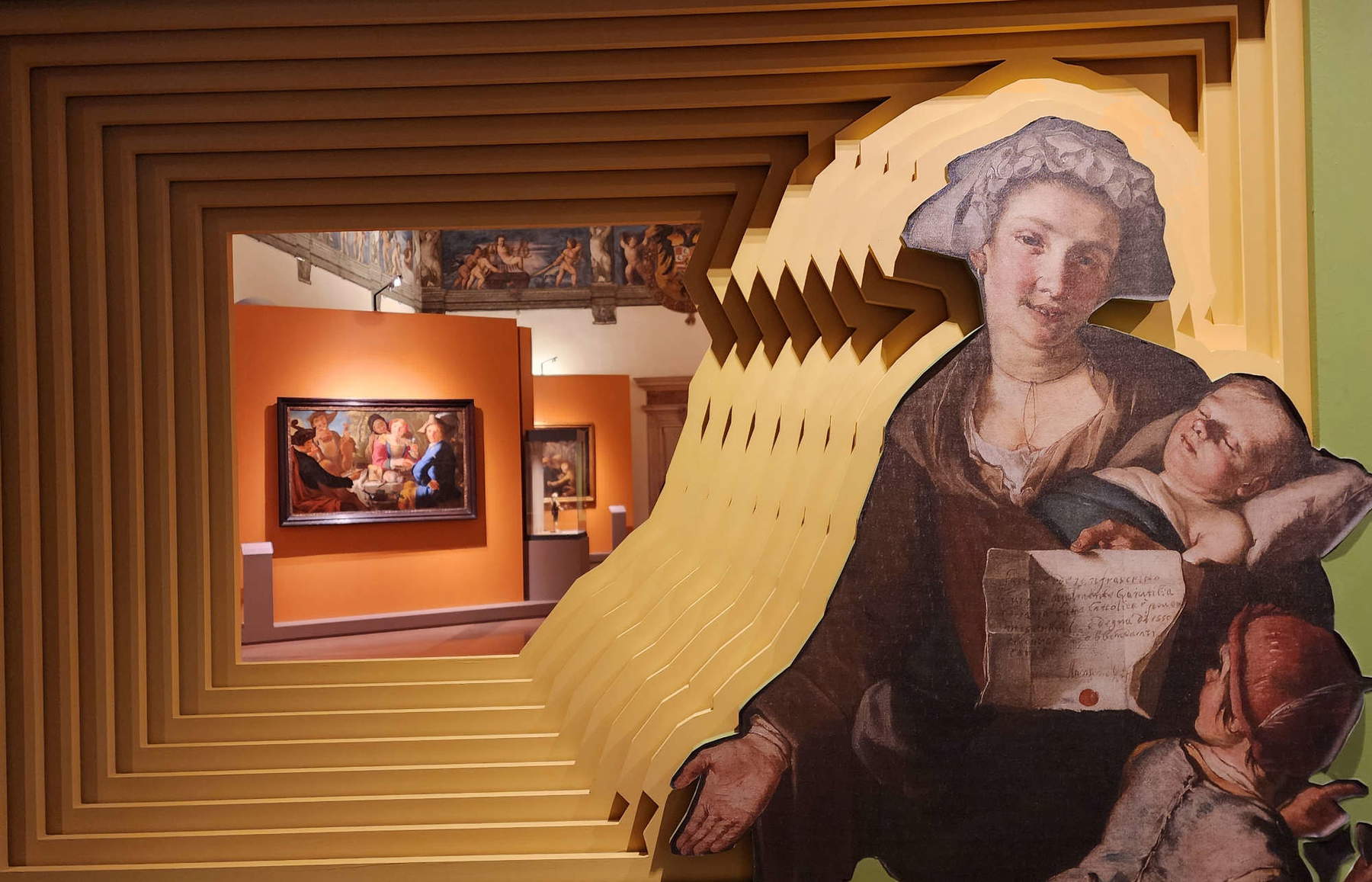
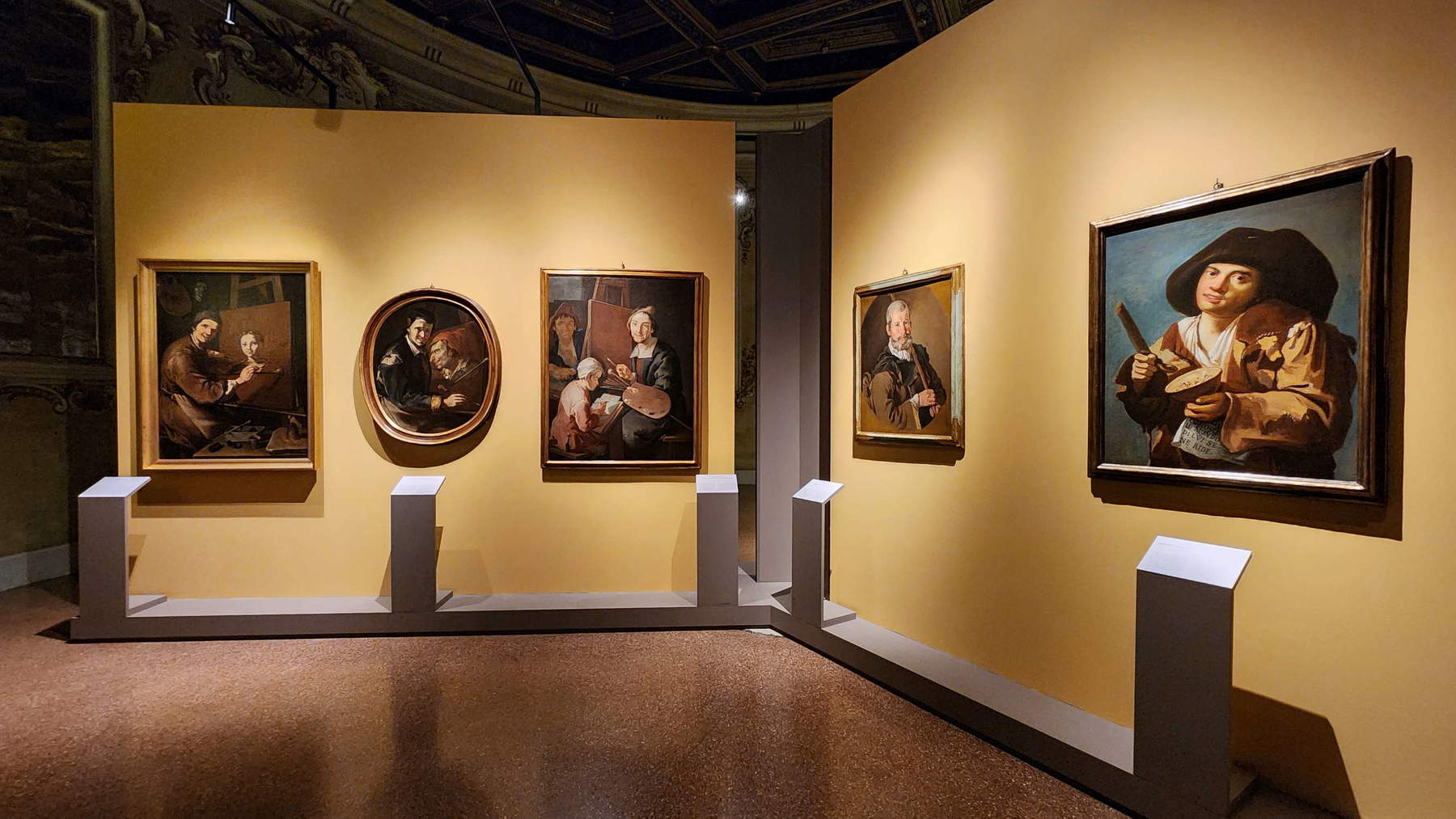
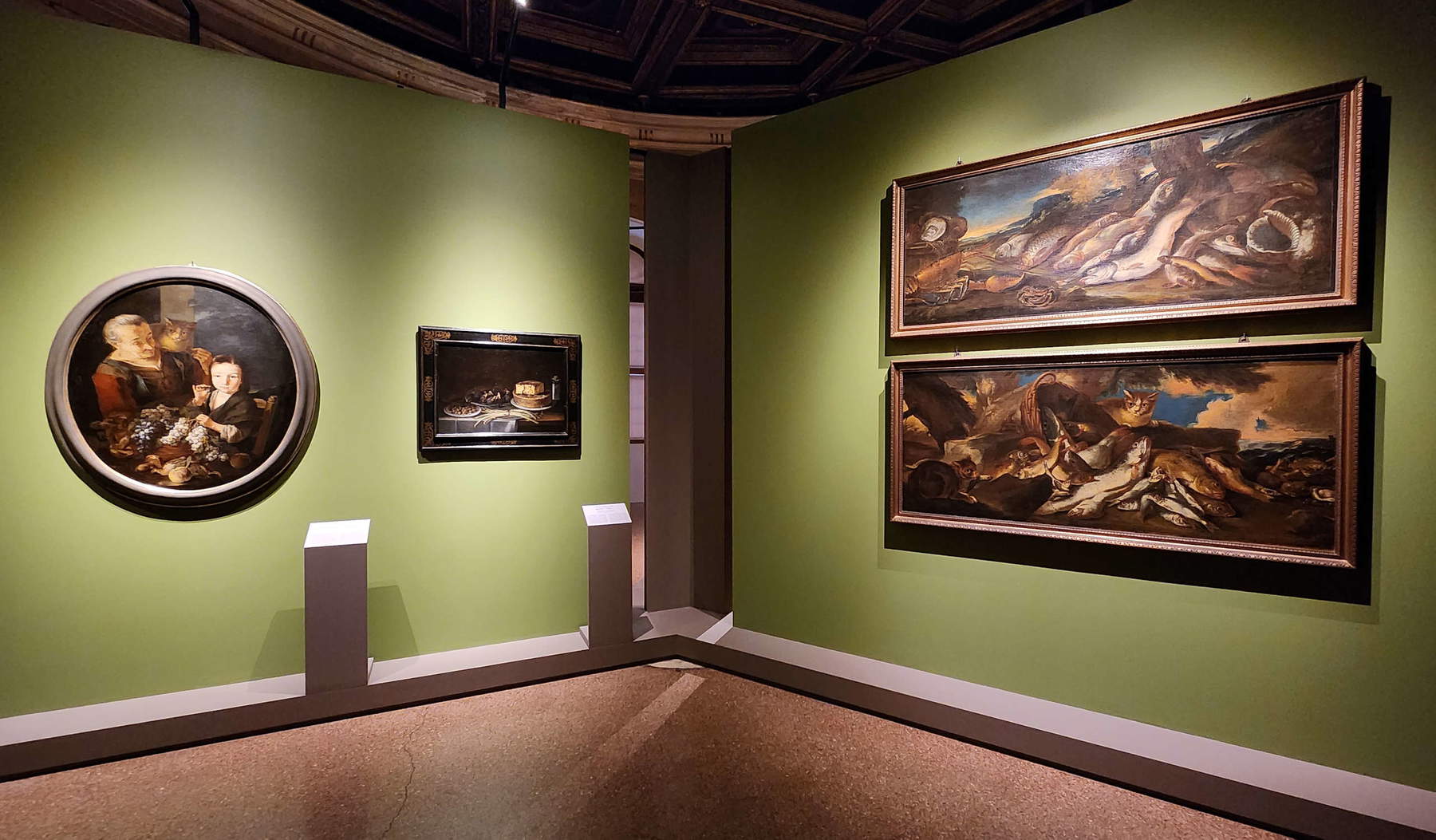
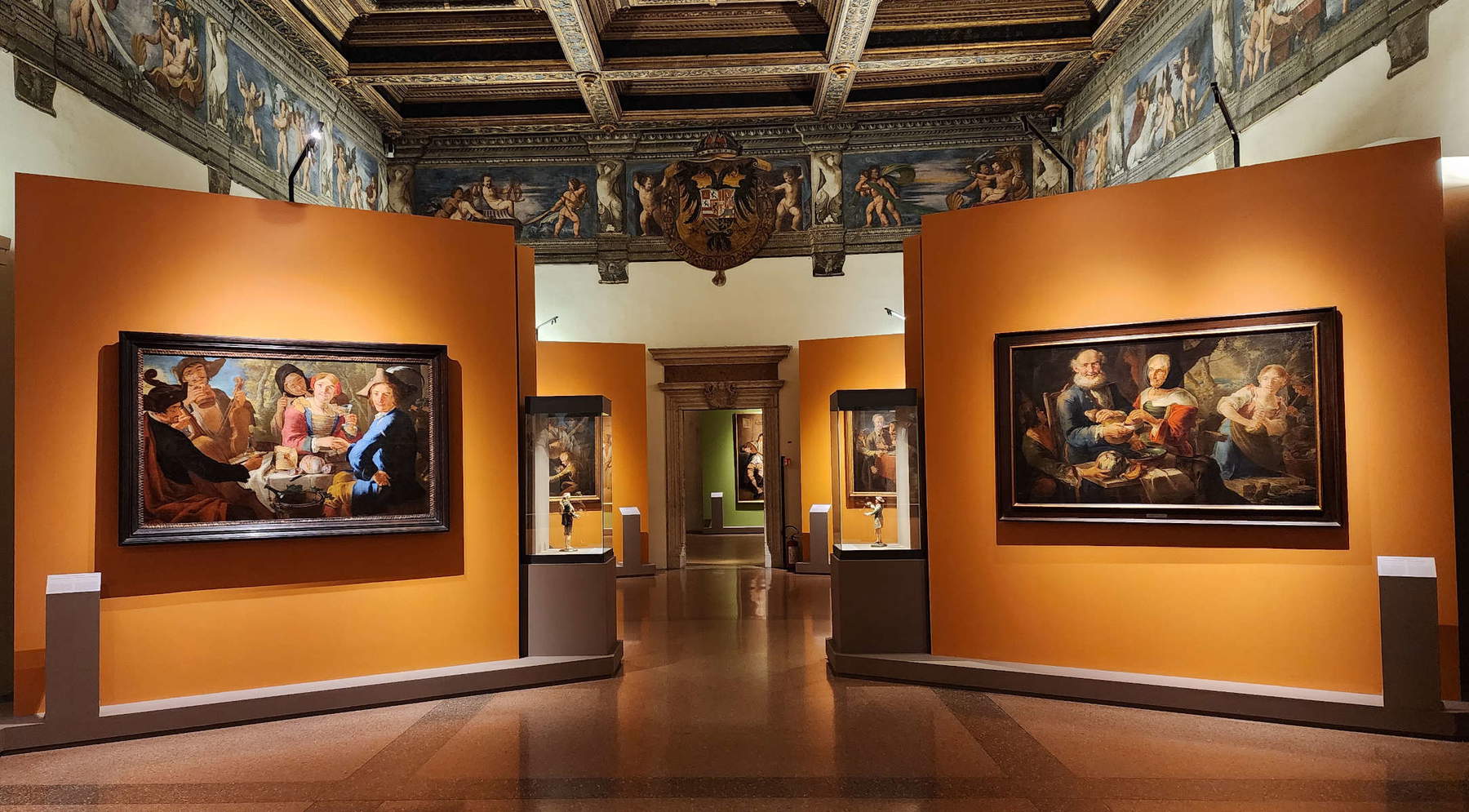
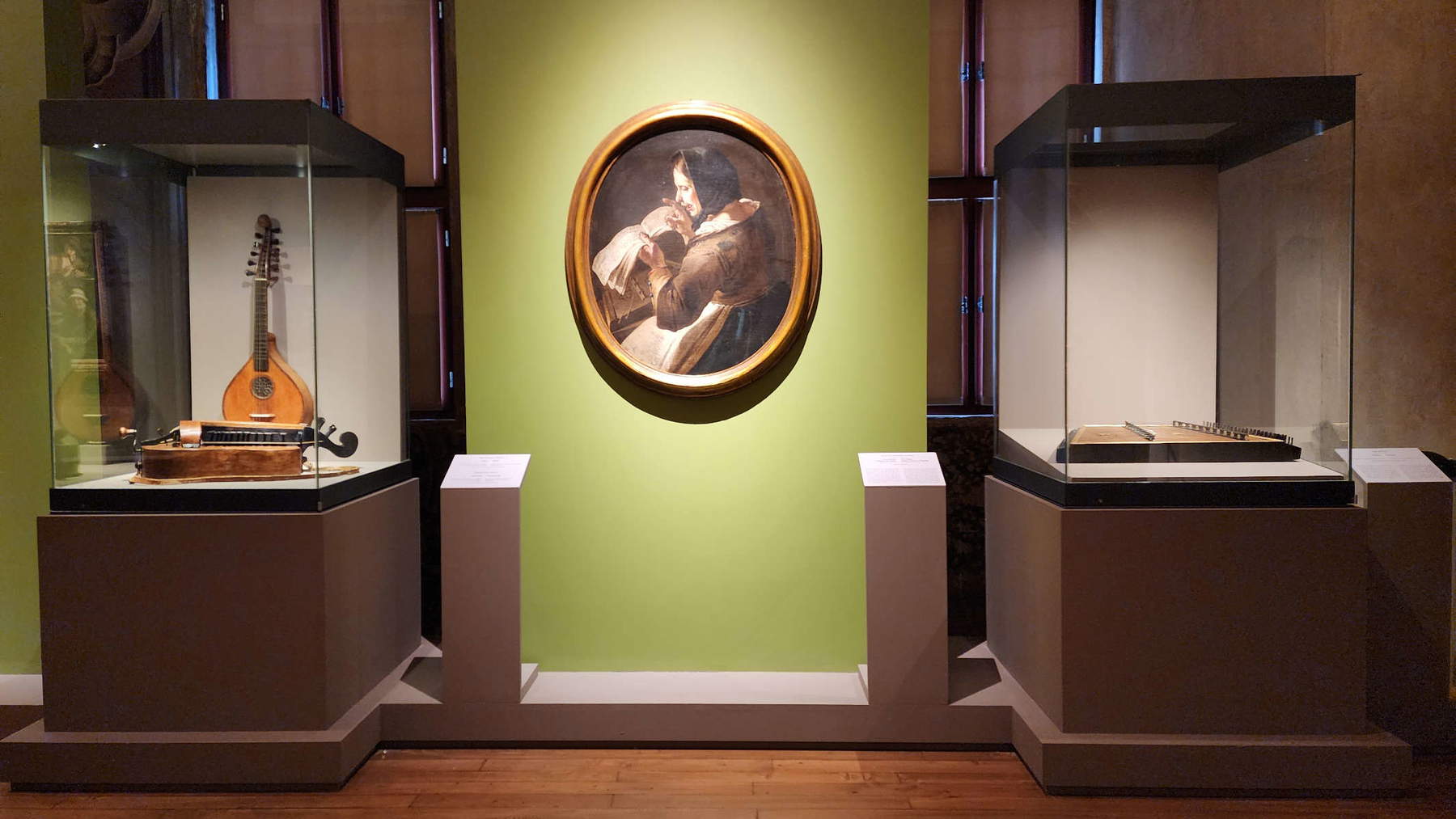
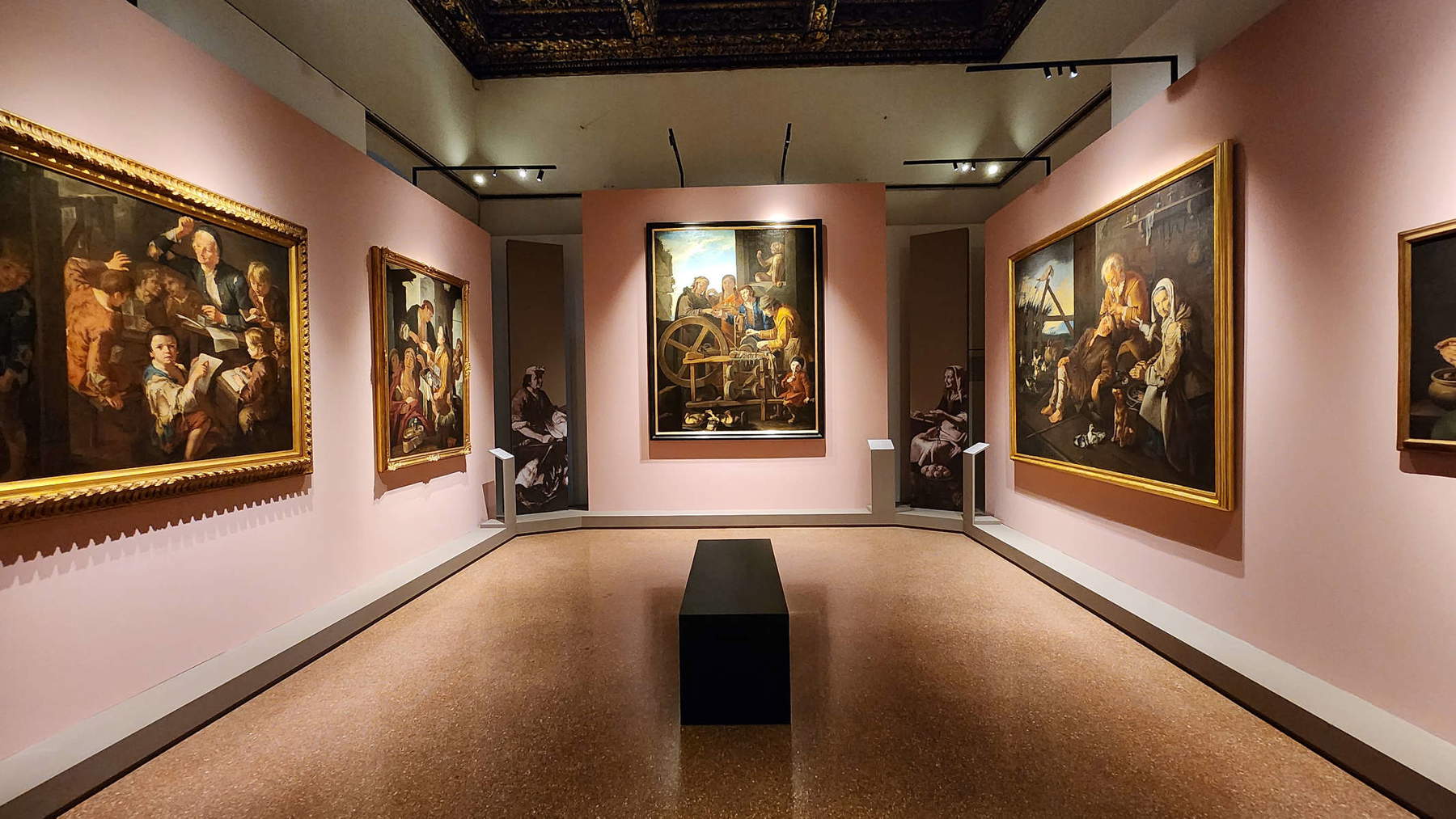
Even the painter smiles, caught while painting, in the first canvases the visitor encounters along the tour itinerary: perhaps self-portraits, since the painter is always the same. He smiles to the point of showing his teeth, and sometimes the smile becomes a crude, boisterous laugh: this is immediately seen in one of the first paintings in the exhibition, the Old Spinner and Card Players, a composition also repeated, but on a larger scale, for The Fish and Vegetable Market at the Canesso antiques gallery in Paris (it was not uncommon for Cipper to take up his own inventions or to include motifs already tried and tested in larger scenes: one immediately gets a taste of this with the Sunday Lunch with Young Flutist in which the artist includes the Young Girl with Bowl displayed alongside). Cipper, however, was not an anticipator of a habit born in the twentieth century, that of smiling in front of someone who is fixing your image on a support, whether a painter or, as is more likely today, a photographer, even an improvised one. Before, smiling in front of a lens or in front of a painter was considered disreputable, and Cipper was no exception-he was anything but an artist driven by the idea of breaking a convention. Giovanni Paolo Lomazzo, another great Lombard, had devoted an entire chapter to “allegrezze” and “risi” in his treatise on painting. Laughter was associated with cackling, and cackling with situations capable of provoking it: “joking, teasing,” “certain things apt by their nature to move laughter in anyone who looks at them.” Lomazzo wanted to be clear in reiterating that the painting had to present an appropriate narrative context to justify smiles and laughter, because “if one were to see some people partying and laughing without cause, of course it would be madness to be clubbed,” which is why “one must place the causes principally of laughter et express them in such a way that those concerning them are moved to laughter by looking at it.” Therein lies the reason for so much laughter in this passage from Lomazzo’s treatise: the relative must be amused, and laughter too, for the mentality of the time, is a resource capable of activating the comic. The painter is able to induce laughter in those who observe his paintings if he is able to show “carefree faces, turned some upward and who to the side, and others in other ways that look back at each other laughing and grimacing, showing their teeth, opening their mouths in a new and different act of laughing, widening their nostrils, and hiding their eyes in their heads, so that they appear red, inconstant, fickle, inconsiderate and placed at random, as happens in such occurrences.” Cipper’s characters laugh because they are supposed to make people laugh: the Austrian was not inventing anything new. We take notice because he is perhaps the first artist whose abundant production of laughing subjects has been preserved, but he was widely preceded: the Lombard sixteenth century is overflowing with grotesque characters who laugh and smile.
And it is in this fertile humus that the precedents of Giacomo Francesco Cipper must be found. We do not know anything about the early years of his life, so we do not know where he was trained, with whom he studied, what models he looked to, although it is not difficult to think that certain engravings of popular subjects from the Dutch sphere (above all, those of Adriaen van Ostade: on the relations between Cipper and engraving intervenes in the exhibition catalog an in-depth essay by Roberta D’Adda), as well as a certain strand of Lombard painting particularly prone to realistic investigation. Vincenzo Campi, for example, painted the Mangiatori di ricotta eighty years before Cipper was born. The Austrian’s references should perhaps be sought in and around Cremona, among Campi’s works, those of Sofonisba Anguissola, or amid certain things by Panfilo Nuvolone (with whom Cipper has in the past been equivocated: for a long time, the Austrian remained a question mark for critics), or amidst Brescians such as Moretto and Romanino who predated Caravaggio himself, or even among the naturamortisti à la Fede Galizia or à la Ambrogio Figino who invented a genre without it being clear even today where Lombard still life in the late 16th century should have its roots. It is, moreover, in the vein of the latter tradition that the captivating still life, also exhibited in the first room, which is to date the oldest signed and dated work by Cipper, bearing an inscription with the date 1700.
Cipper is immediately presented as the painter of reality, as the painter of the everyday, as a keen observer of a varied humanity always on the margins, as a comedian who roams the countryside and cities of Lombardy in search of subjects capable of arousing laughter, as the leading name in ’a group that includes such excellent painters as Felice Boselli, Eberhard Keilhau, Antonio Cifrondi, Giacomo Ceruti, and Ulrich Glantschnigg, some even distant in time (Keilhau died before Ceruti was even born, to say), all represented in the exhibition to bring out affinities and divergences between the various modes of working: the dense, doughy, fat, peasant matter of the Emilian Boselli, the almost documentary intentions of the South Tyrolean Glantschnigg, the scenes still tinged with Caravaggism of the Danish-Roman Keilhau, Ceruti’s melancholic composure that becomes apparent empathy, and so on. Cipper has always been considered the rowdiest and screechiest of the bunch. Not wrongly if you will, and in the exhibition, in the room that intelligently compares all of them, it becomes all too clear: look, for example, at the Family Desco with its cheerful disorder, the Elderly Couple where the curators also see erotic allusions, or theDomestic Interior with Elderly Couple where a boy steals cookies from the old man being fed by his wife. However, this excess of joviality has often been misinterpreted, and has weighed negatively on Cipper’s critical fortunes, especially where the need to compare him with Ceruti was posed. That is, almost always. Carved into the historiography remains Giovanni Testori’s violent critique: “ugly painter and, what admits of no forgiveness, bad man.” Twentieth-century critics have never been benevolent toward Cipper (not even, it would be said, in affixing to him the atrocious nickname “Todeschini,” a recent invention that will hopefully be completely disposed of starting with the Trentino exhibition). One has wanted to read in his bluntness, sometimes grotesque and at times almost caricatured, a form of contempt for the poor whom the artist painted and investigated; the festivity of his figurative texts has been misunderstood and has been interpreted as mockery and mockery. No more, of course, than Ceruti’s delicacy has been misunderstood, considered for too long an anachronistic form of affectionate participation, with the result that there has been an excess in both directions, magnifying Ceruti (or, rather, attributing to him pre-Enlightenment impulses that he certainly did not have, and this also because, Denis Ton points out in the catalog, there’was to build a myth around Ceruti, elevating his “importance and otherness to the highest degree with respect to the context around him, both among those who had devoted themselves to reality painting and among artists versed in other genres”) and, in return, beating Cipper, branding him as a vulgar painter almost to the point of verging on racism (“racism” is not a word chosen at random: Testori adopts it in his critique).
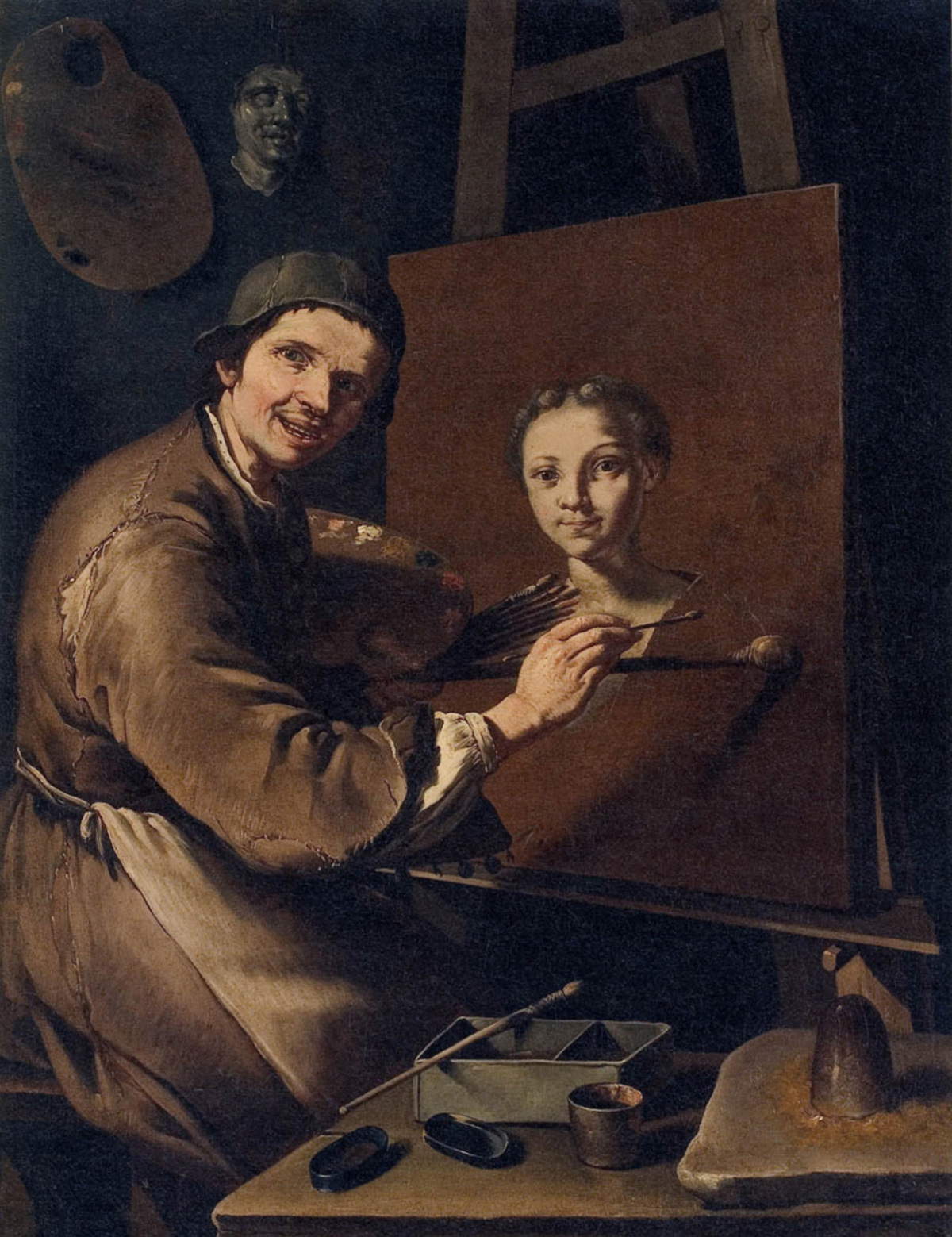
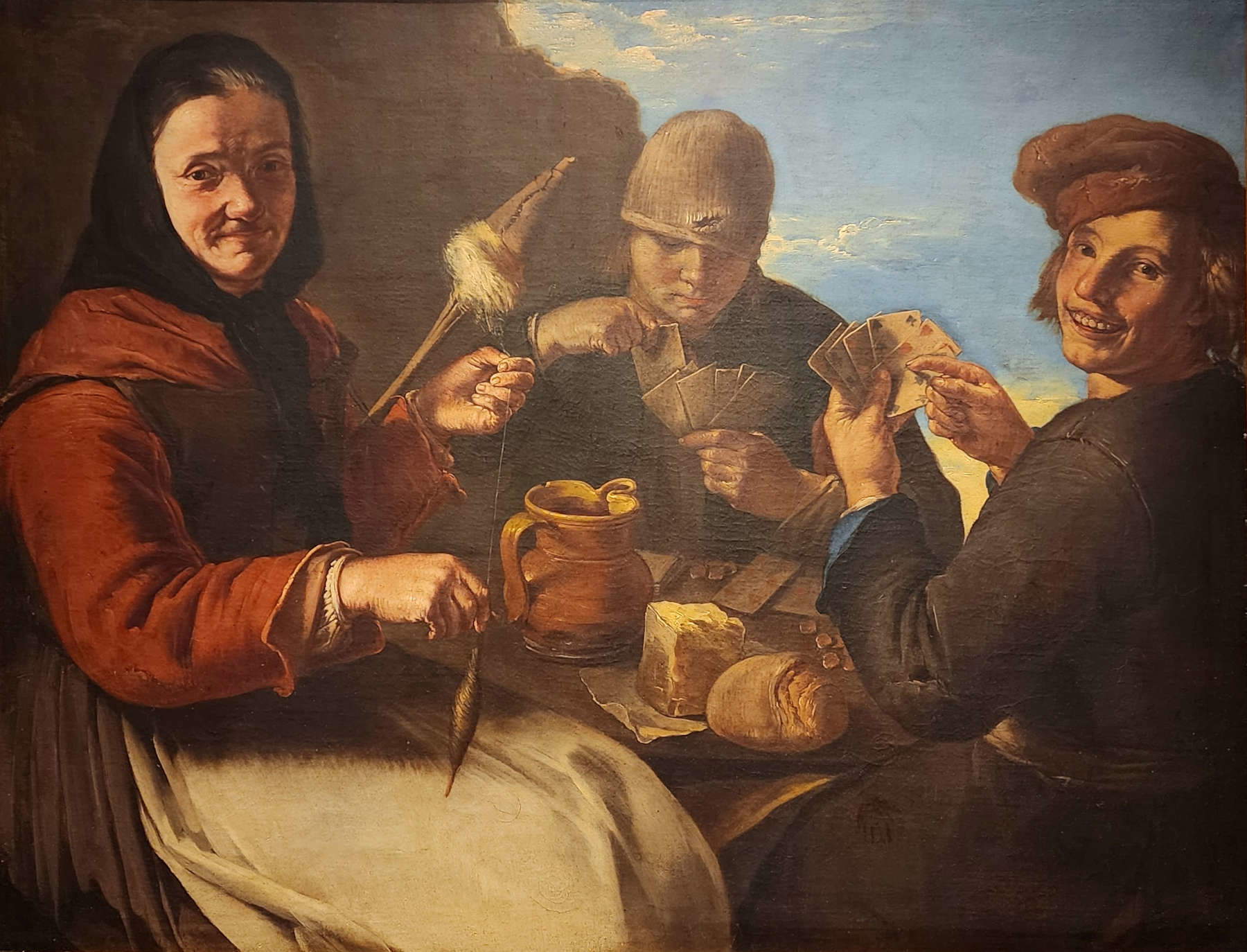
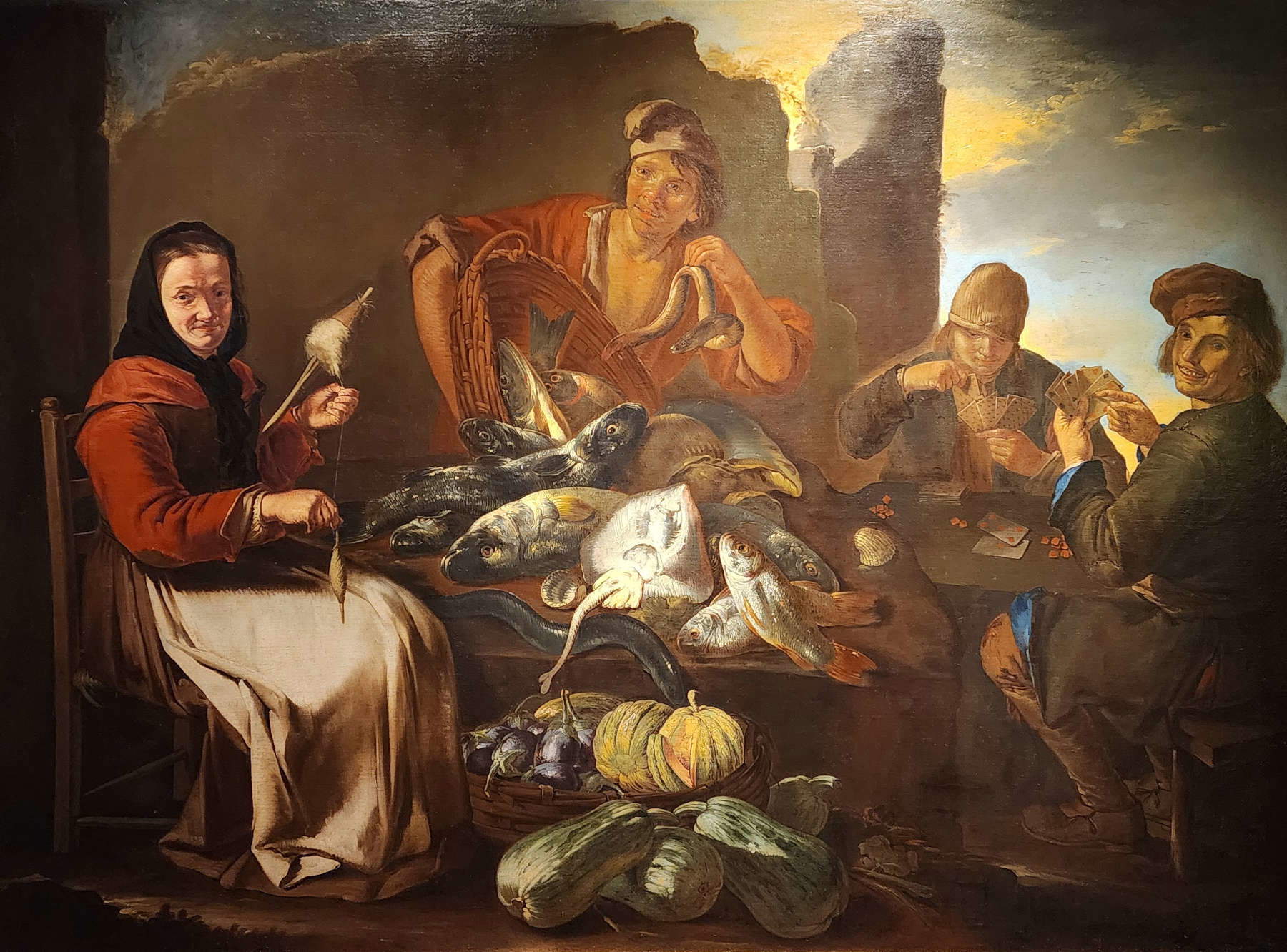
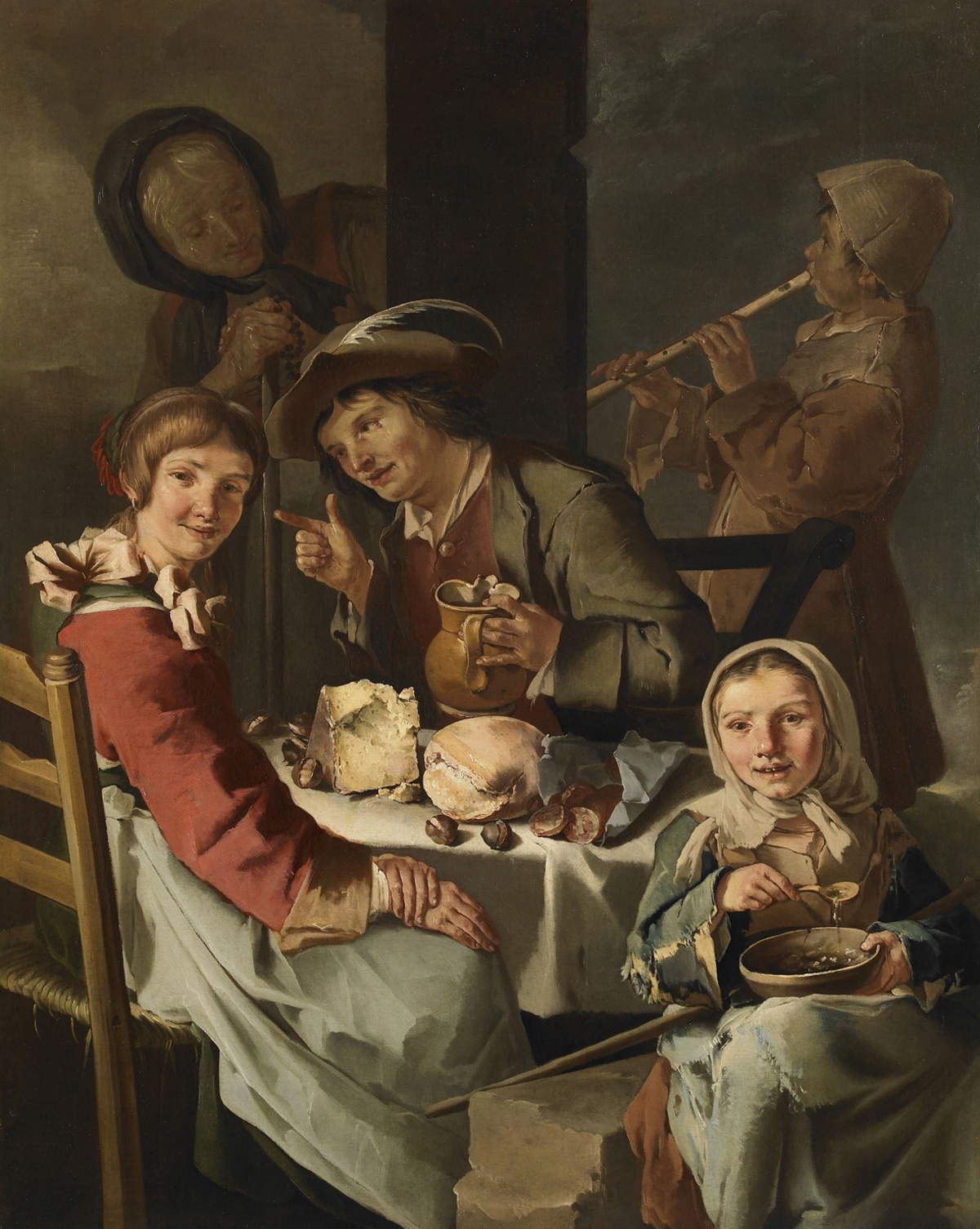
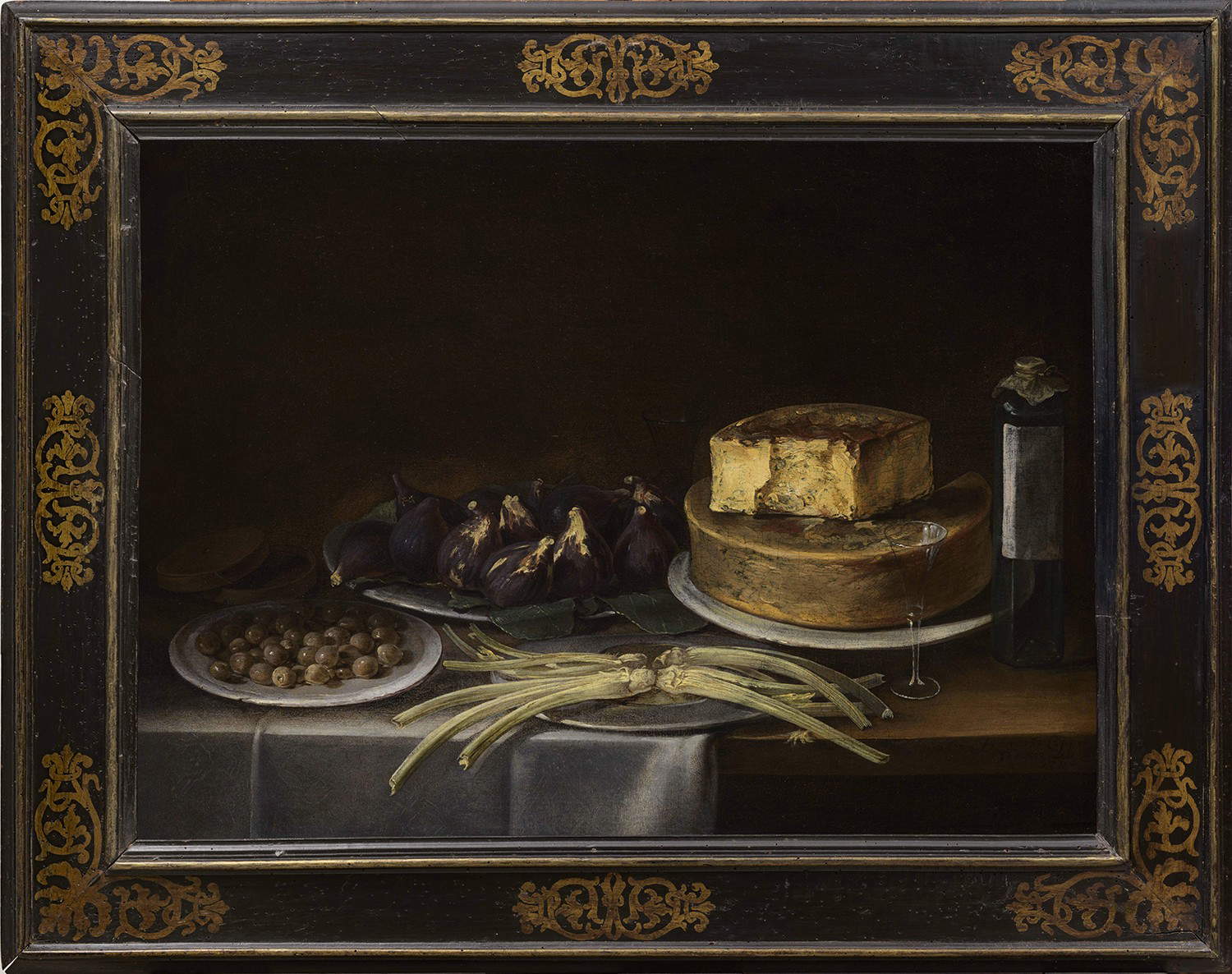
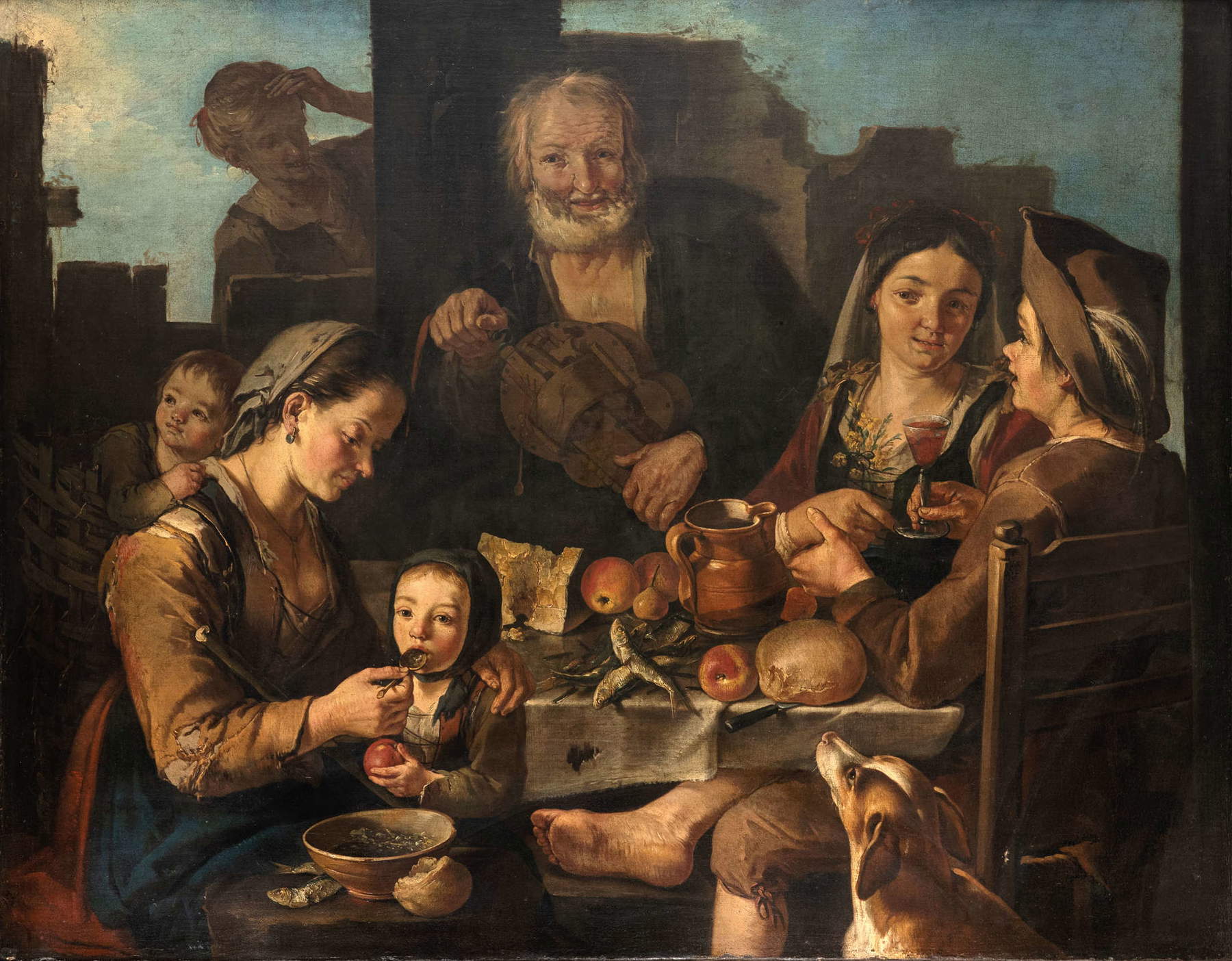
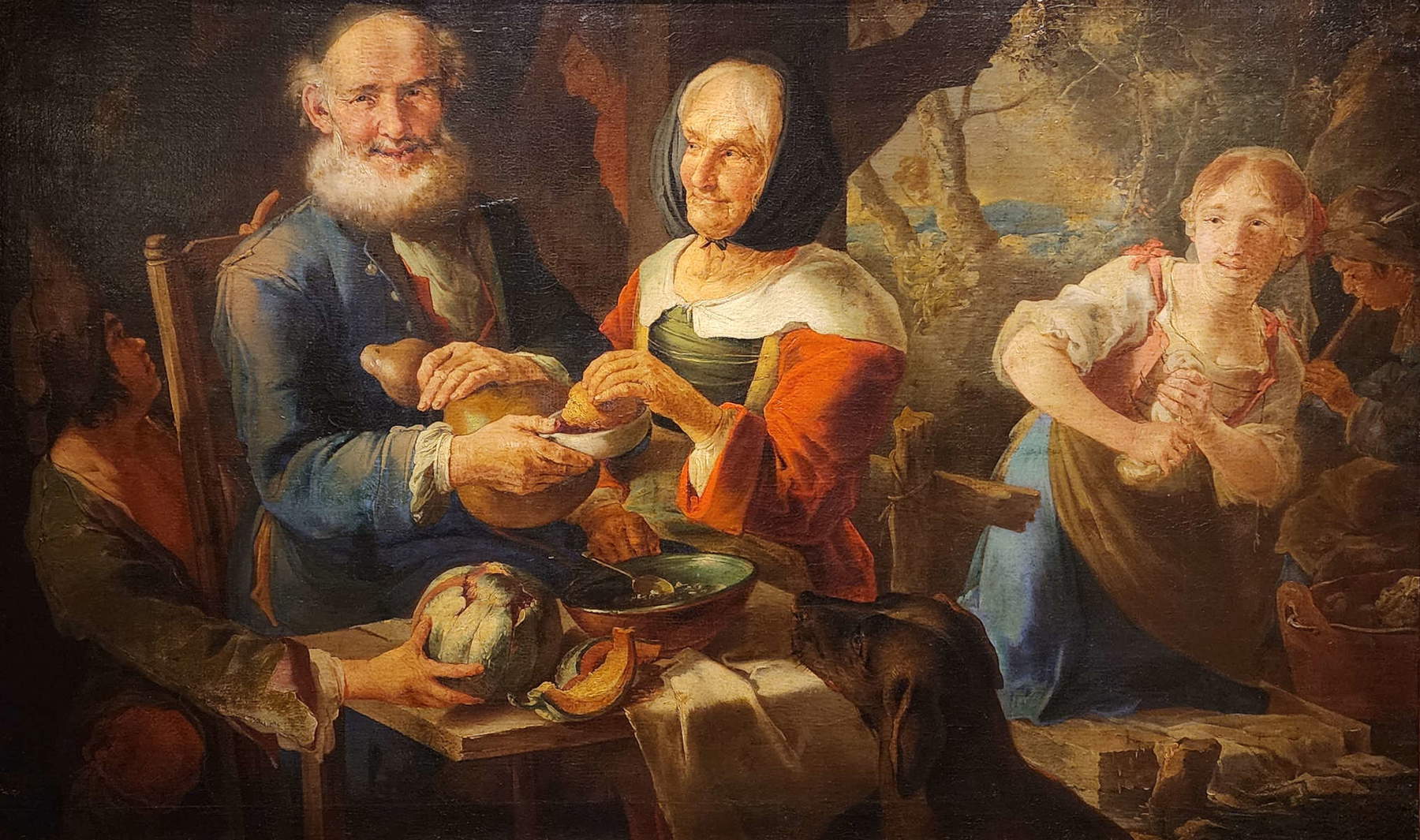
The difference between the two, however, does not lie in their moral posture toward the subjects they depicted, not least because they both painted for the same recipient, namely the ruling class of their time, a ruling class whose taste, for a few decades, was directed toward genre scenes that brought into the homes of those who could afford to pay a Ceruti or a Cipper what, Salvator Rosa would have said, they despised alive and loved painted. About Ceruti’s clients we know more and better, and they were probably more sophisticated, wealthier, and better positioned clients than Cipper’s, but the underlying assumption does not change: neither, we feel, was motivated by purposes of social denunciation. The poor paintings, if anything, responded more to allegorical or moralizing intentions: see in the exhibition, for example, The Peddler of Ribbons, where the clueless peddler suffers a deception at the hands of four gypsies; the Scene of a Table Set , which perhaps alludes to the theme of the five senses; or The Grinder and the Gypsy Woman , which is meant to place the relative before the choice between honest work and a life of expediency, judged undeserving according to the parameters of the time. But the same reasoning could be applied to all the paintings on display. Rather, the difference that separates Ceruti and Cipper lies in the gaze each of them turned to the poor, a gaze that responded to a personal inclination, a feeling. Consequently, even today the most timely and pithy exegesis probably remains that of Giorgio Manganelli, who in 1987 reviewed in Il Messaggero the great Ceruti exhibition curated by Mina Gregori in the halls of Brescia’s Santa Giulia Museum: “To my poor eyes, Ceruti’s pitocchi are a rhetorical register, a choice of language, and that choice, if I must be clear, arises not already from Christian love, but from absolute moral indifference, from a splendid and grim pictorial passion. Ceruti needed the pitocchi, for they were the guardians of the distressed, macerated colors, the powerful ones, the rulers of decomposition, of decay, of the deciduous, of the saddened; and here flourish, like splendid sores, the bigos, the browns, certain worn grays, all of which are not already indications of love for poverty, but of love for the richness of colors that through the shrewd cultivation of misery are captured and usable.” And the other major exhibition on Ceruti, the one two years ago, again at Santa Giulia in Brescia, gave full account of the idea of a painting of the composed and delicate poor as Giacomo Ceruti’s “trademark,” I wrote at the time: a trademark later completely abandoned when the changing needs of taste directed his research elsewhere. One can imagine something like that for Cipper, too. His Old Woman Warming Her Hands in Front of the Brazier, a character indeed recurring in his production (the visitor can see this in the exhibition, looking at the Old Woman in Front of the Brazier that comes almost to the end of the path, and comparing it with the identical one in the Family Scene of the Civic Museums of Treviso, or with L’extraction of the stone of madness from a few rooms earlier, where another woman, slightly younger, appears in the same pose), it is not a figure born of a painter’s compassionate impulse: if anything, more likely, it is a stock motif, it is an element that gives balance to a composition, it is a subject in the presence of which the artist can flaunt dexterity in his lingering on the wrinkles of the face, on the skin of the hands, on the sparks of the coals, on the effects of light that enliven the threadbare garments, on the difficult pose of the old woman who is always depicted with her back turned and caught as she turns to check who is coming up behind her.
Therefore, the inferiority complex that Cipper’s critics have always felt with regard to Ceruti should not be resolved in terms of a more or less heartfelt identification (one of the objectives of the exhibition seems to be precisely the critical relocation of the Austrian also, and perhaps above all, with respect to his Milanese heir): it is diversity of gaze. Or, if one really wants to move away from a purely formal reading, it is at most diversity of temperament. In Ceruti it is given to see, writes Maria Silvia Proni, “an author with a temperament prone to depression, ready to dress up with his own emotions - constant in depressed characters - a vagabond, a cobbler, a porter.” The same reasoning could be advanced for Cipper: a more hilarious nature that spills over into the characters.
It is, moreover, Cipper’s, a painting that knows few changes throughout the course of his career, a situation that has also led over time to some difficulty in reconstructing his artistic path, and which led to the decision to organize the exhibition at the Castello del Buonconsiglio by themes. It is painting that remains true to itself, while knowing ups and downs, but which is not, however, alien to certain pieces of virtuosity: it stands out, for example, the small Filatrice ch’è perhaps the highest outcome of Cipper’s attention to the real (“the studied pose,” writes Denis Ton, "seems designed above all to show the splendid piece of tattered, beggar’s clothes : a passage of still life by a true specialist, an occasion for a virtuosic exploit of mimetic rendering from life."), or the Old Woman Spinning with Little Boy and Bowl that at the Buonconsiglio is displayed next to him, a work in which theAustrian artist lingers as usual on the objects, on the apple, the loaf of bread, the bowl, on the reflections of light that enliven the threadbare apron of the spinner, to the point of lavishing more effort on the objects themselves than on the expressions of the two characters. There is discontinuity, one would think, even in the relationship to the subjects: probably, those who in the past had seen only certain portraits of the poor by Cipper, such as the aforementioned Spinner or even the Begging License, a portrait of a beggar woman who shows her permit to beg (at the timeAt the time, those who wanted to engage in this activity could only do so with a regular license issued by the authorities), he would not have gone so far as to accuse the artist of excessive roughness, uncouthness, and profanity. Cipper, in essence, seems to use a little more leniency, if one can call it that, where he finds himself having to depict single subjects (or scenes with a few characters, two or three at most), which the curators have grouped together mostly in closing: admirable are the Mason, displayed alongside a swordsman who came on loan from the Museum of Martial Art in Botticino as a weapon almost identical to the one depicted in the painting (the character depicted was evidently a veteran who had had to reinvent himself), and theBlind Old Woman with Compass and Two Mischievous Youths, where the composed old woman begging for ’alms, one of the most dignified and stern characters in Cipper’s entire production, becomes easy prey to the cowardice of the two boys, two bored well-to-do young men (one notices this because they are dressed well, or at least without the patched-up clothes that abound in Cipper’s paintings). Conversely, in scenes involving multiple figures, one may happen to witness all sorts of abandonment, from children overindulging in melons(Market Scene with nursing mother) to furious fisticuffs including biting(Women’s Brawl, Table setting).
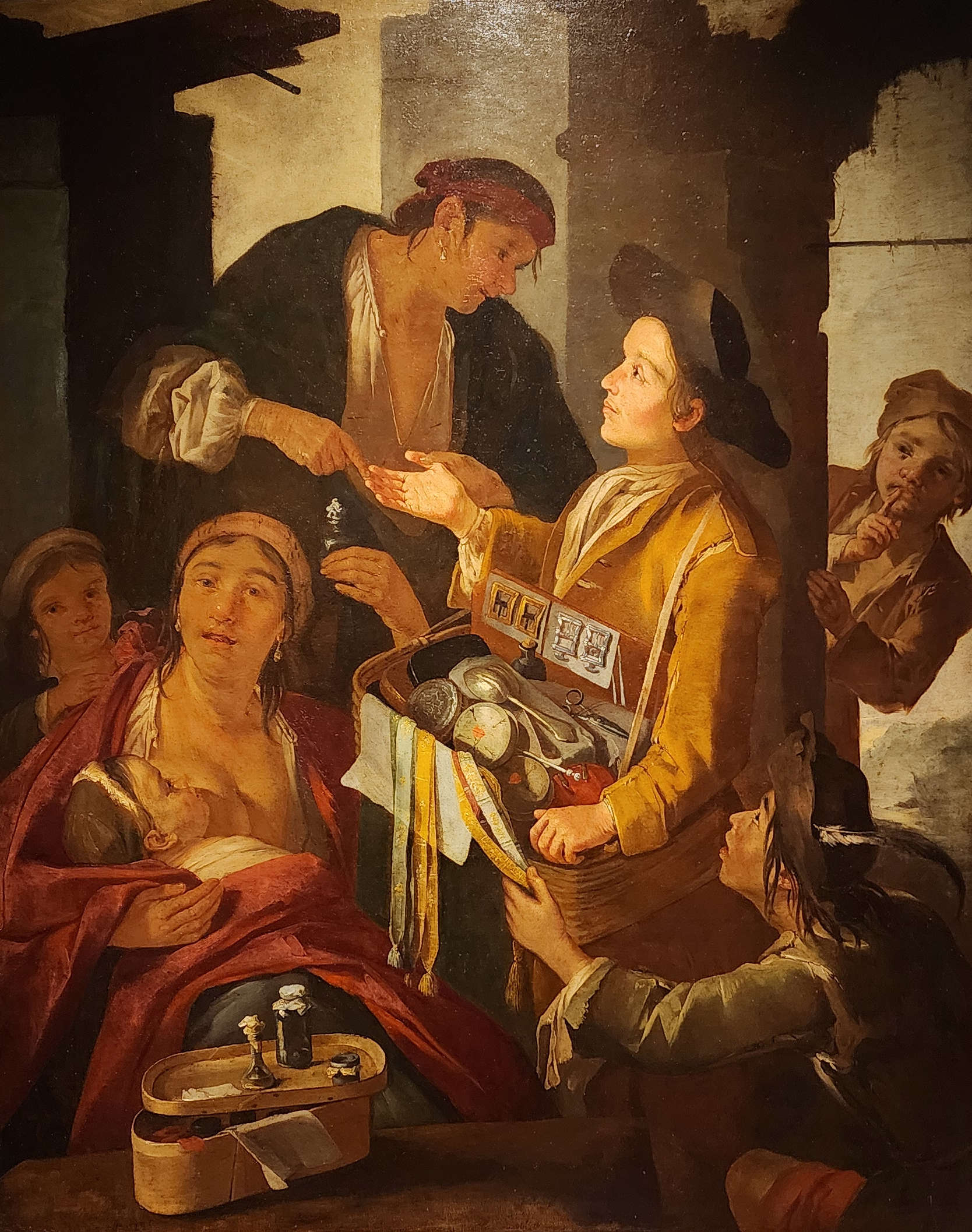
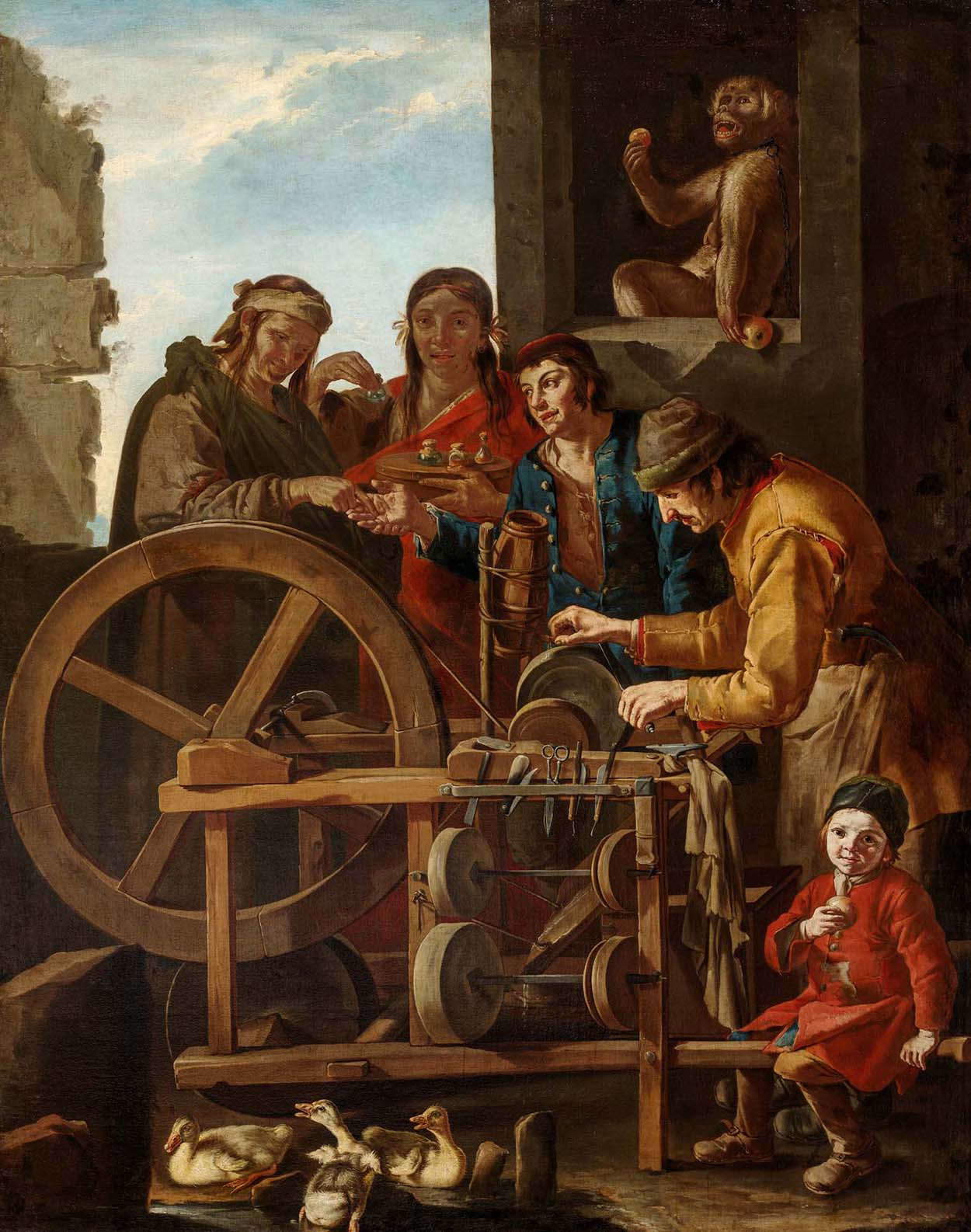
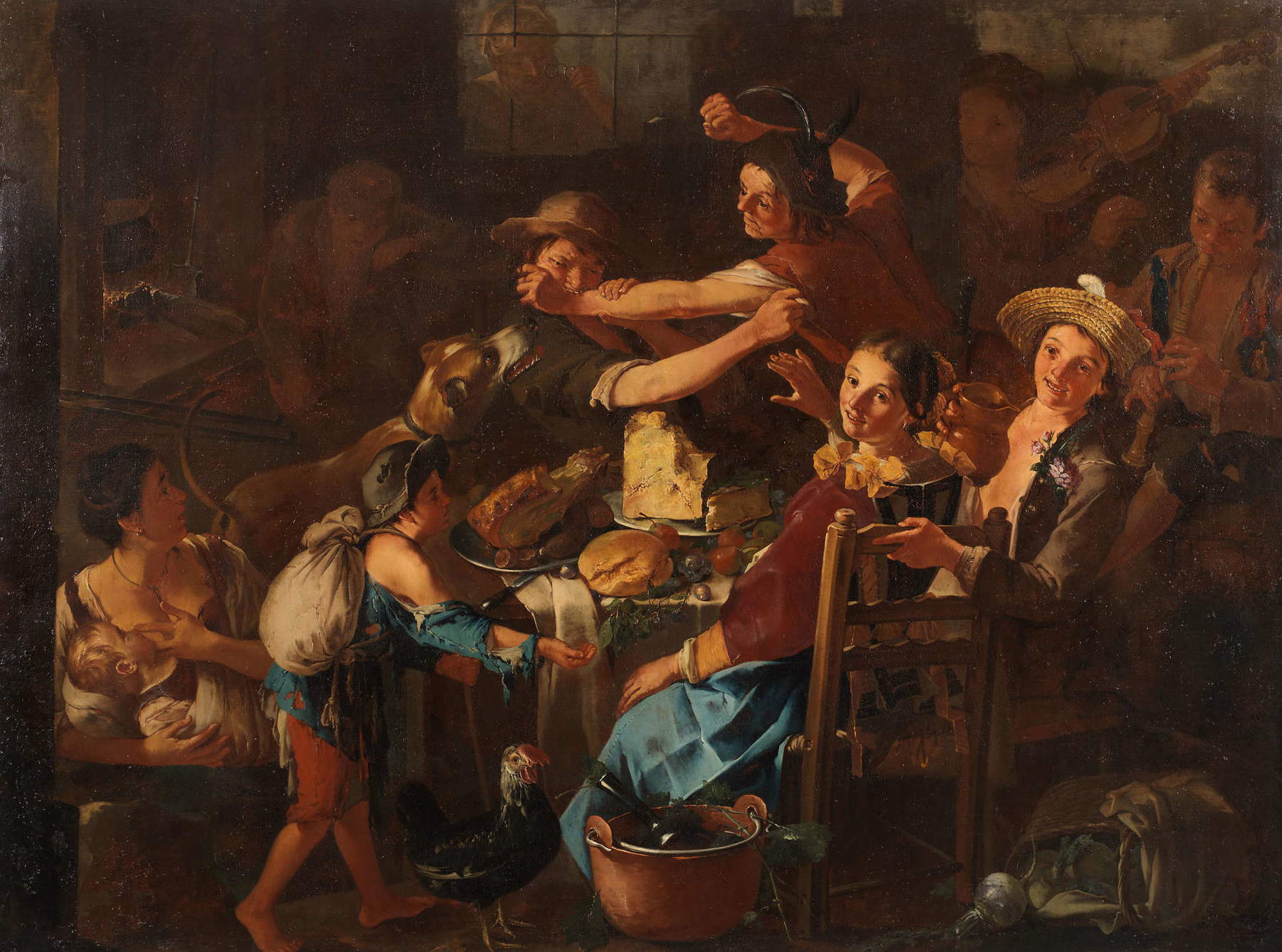
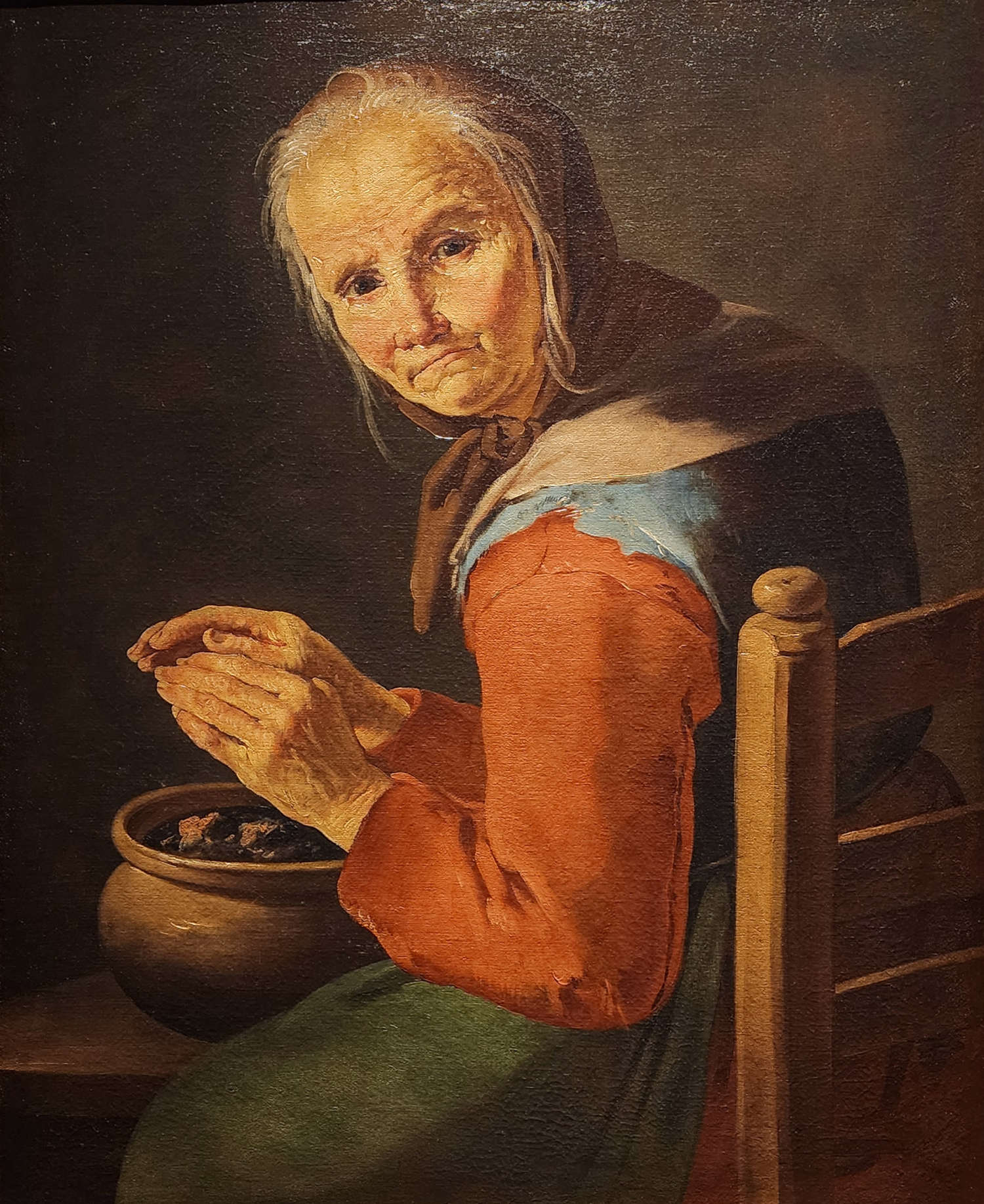
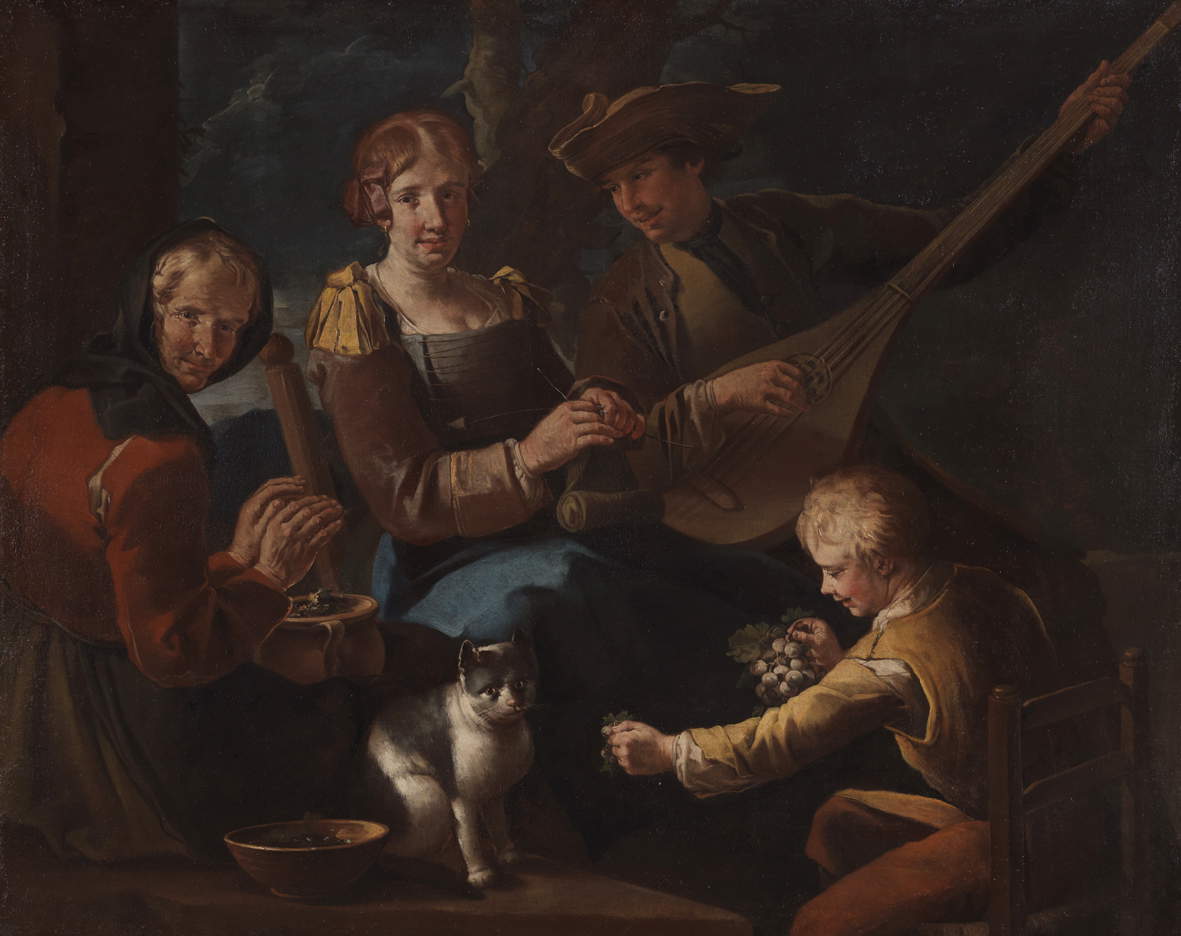
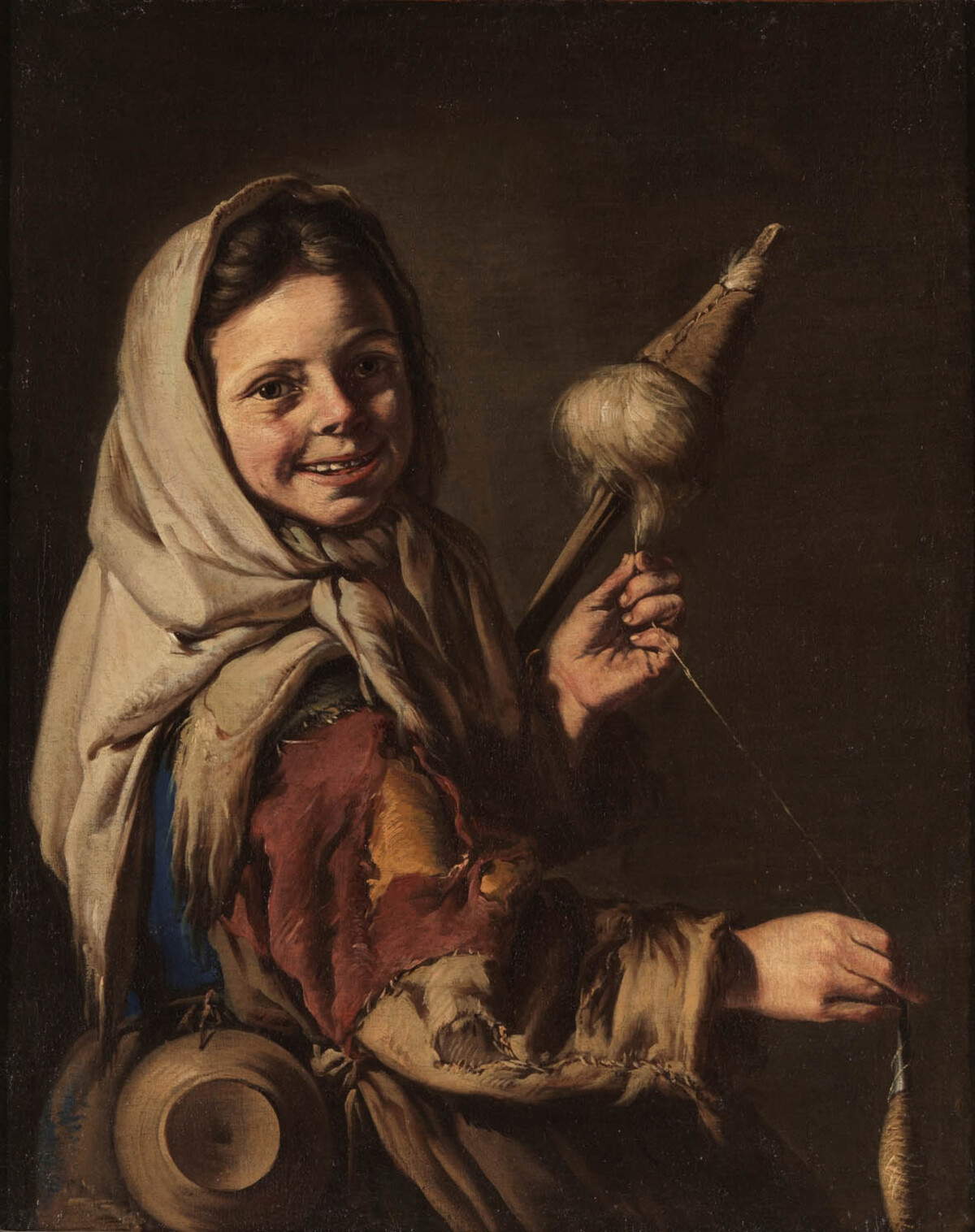
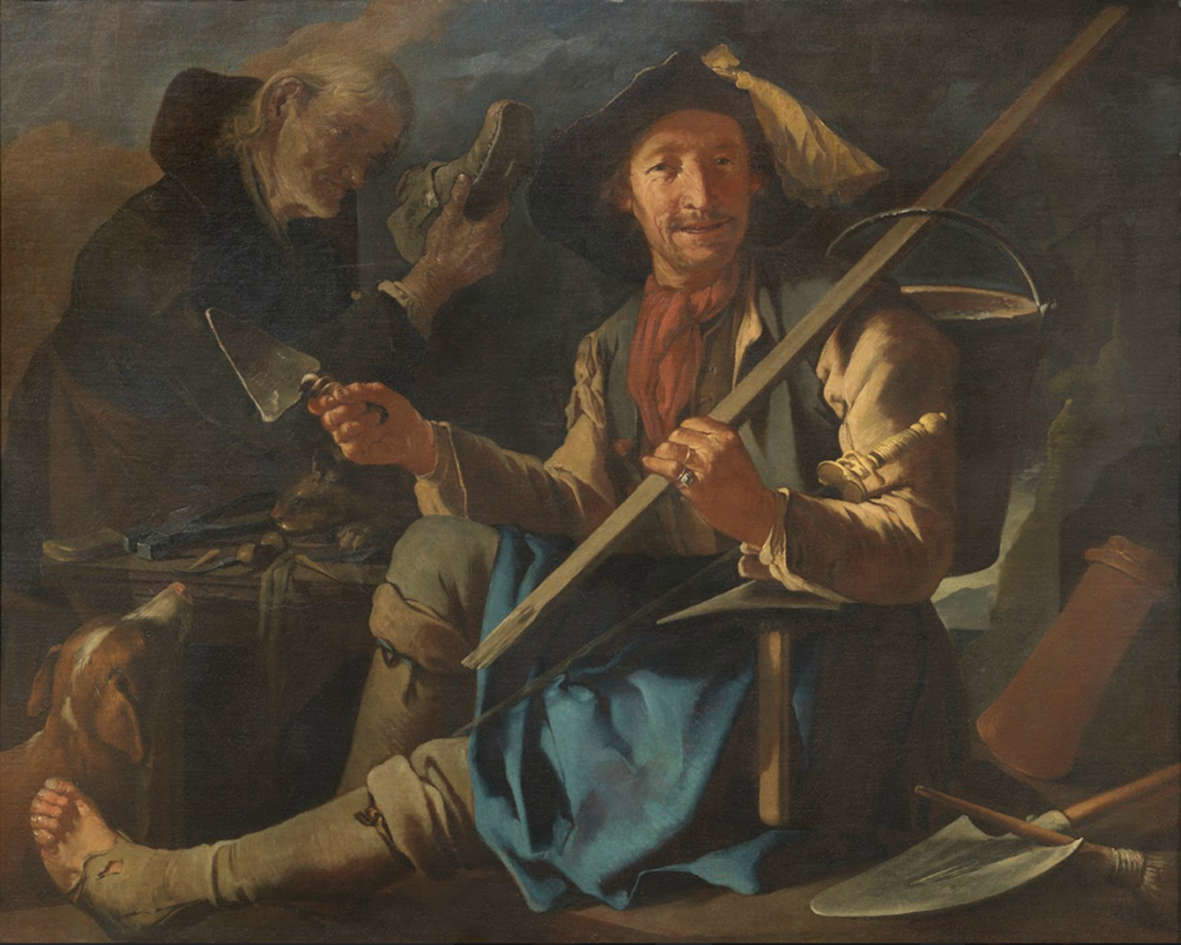
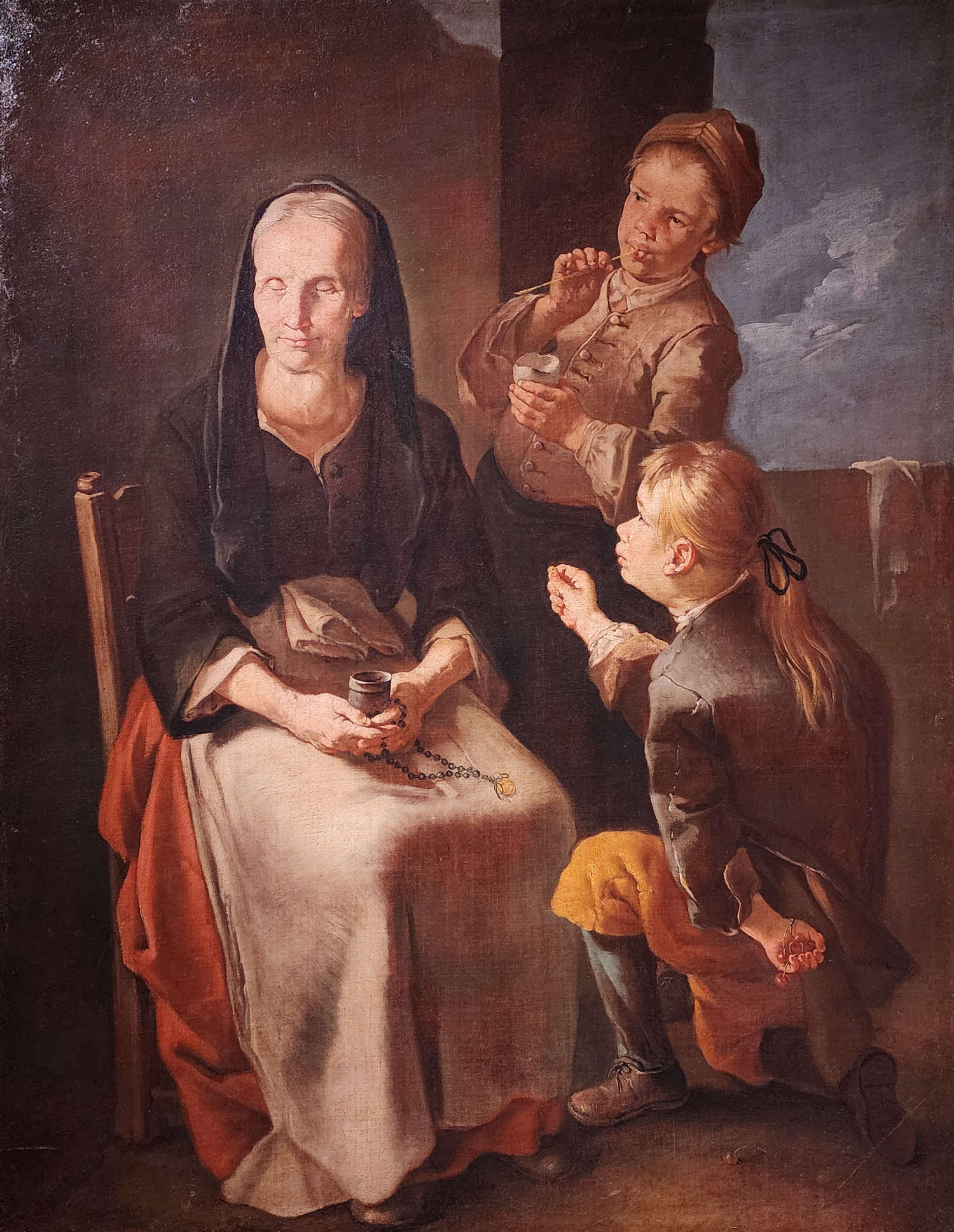
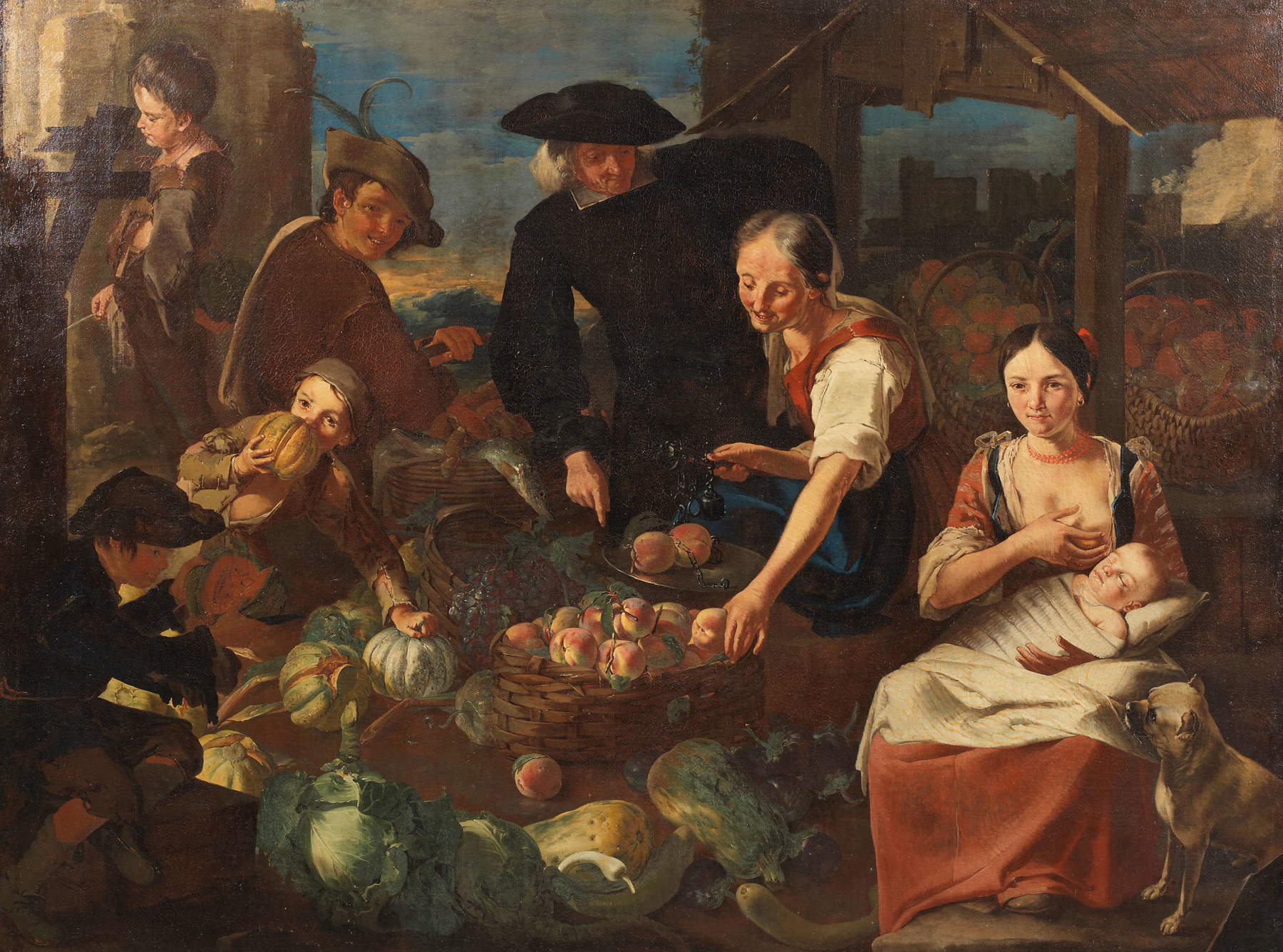
These are the scenes that cost Giacomo Francesco Cipper his conviction. A condemnation also sanctioned by the comparison with Ceruti, an artist who, despite the comparisons in the exhibition and despite a constant tussle with Cipper, especially in the catalog, appears capable of a higher degree of tightness and versatility that was completely unknown to the Austrian Cipper. It must be said, however, that the constant comparisons between the two are well-functioning for the reconsideration of Cipper, who comes out of the Buonconsiglio exhibition certainly reevaluated, able to rediscover his own dimension as a painter of reality, redeemed from the shipwreck in the big sea of genre painting that so many practiced at the time: the curators intend to attribute to Cipper a propensity for investigation, an exactitude, an attention to the social reality of the poor, an analysis of their life contexts that went beyond painting made to amuse, to solace clients who to the poor probably approached them only if they saw them painted. The exhibition thus intends to attribute to Cipper the role of explorer of poverty, of acute investigator of the reality of the margins, but not only that: the curators also intend to carve out for Cipper the role of pioneer, forerunner, anticipator of Ceruti’s great reality painting.
The operation seems to have succeeded, and Cipper certainly turns out to have been relocated: thanks above all to a high-level nucleus (on Cipper’s critical fortunes also weighed like a boulder the vast array of shoddy imitators who confused his catalog: in Trento there are only quality works), and of a practice that it is less and less frequent to find in monographic exhibitions today, namely the reconstruction of the context, which instead at Buonconsiglio is full, open, thorough, and intelligent, just as thorough and intelligent is the catalog that leaves perhaps less space for the reconstruction of the artist’s formal profile to concentrate more, on the one hand, on his critical repositioning, and on the other, on the analysis of social contexts, a trait common, the latter, to several exhibitions on painters of reality, which especially for the general public are often configured as time travels within a society that is not often given to see depicted on canvas, and above all that it is difficult to see investigated with such meticulousness and presented to us observers of the 21st century with such abundance. Even the non-expert audience, therefore, has something to enjoy in Trento, indeed: the exhibition itinerary offers valuable explanatory apparatus. As for Cipper, however one wants to consider his painting, and regardless of the comparison with Ceruti, one can hardly avoid acknowledging to the Austrian a new sensibility, perhaps not yet fully accomplished (between him and the younger younger Lombard there is still a thirty-year difference) but nonetheless placed on a new line, a line that diverged from genre painting that still looked to the ways of the Caravaggesque painters (the comparisons in the exhibition help to get an idea: those with Eberhard Keilhau, for example, i.e., with a painter situated somewhere in between, or even more so the comparison with the “Master VH,” the most Caravaggesque of the exhibition, an anonymous artist who, moreover, on the very occasion of the Trent exhibition, curator Proni proposes toidentify with the Flemish Joost van de Hamme) and who would direct the painters who came after him toward a deeper, more meticulous, more careful naturalism. Cipper in Trento regained his dignity.
Warning: the translation into English of the original Italian article was created using automatic tools. We undertake to review all articles, but we do not guarantee the total absence of inaccuracies in the translation due to the program. You can find the original by clicking on the ITA button. If you find any mistake,please contact us.